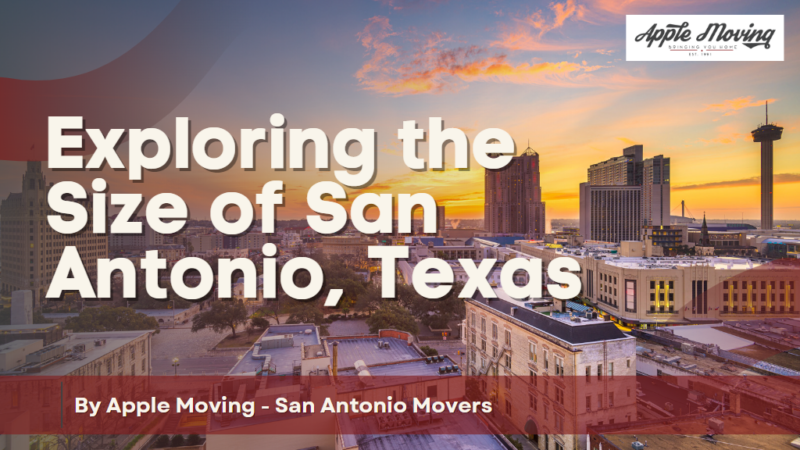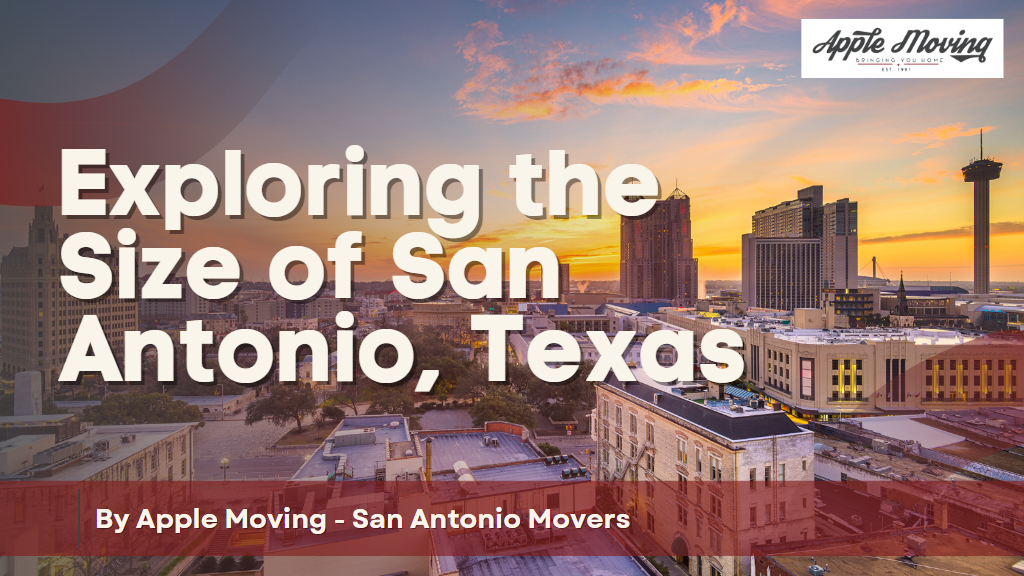Exploring the Size of San Antonio, Texas
A distinctive fusion of history, culture, and entertainment can be found in San Antonio, the second-largest city in Texas. The historic Alamo and the picturesque River Walk are just two of the many attractions of San Antonio, Texas, a multicultural and energetic city. The city is renowned for its significant role in the Texas Revolution and its tangible Hispanic heritage. With a population of more than 1.5 million, San Antonio is a sizable metropolis, at number eight in the country.
The many distinct neighborhoods, districts, and sites that make up this fascinating city can be learned about in a fun way by exploring San Antonio, Texas, on a larger scale. From the hopping downtown to the serene outskirts, San Antonio has plenty to offer everyone. There’s always something intriguing and novel to discover in San Antonio, whether you’re a frequent tourist or a lifelong resident.
Understanding the Physical Size of San Antonio
San Antonio is located in south-central Texas, about 80 miles (130 kilometers) southwest of Austin, the state capital. The city is in Bexar County and is part of the greater San Antonio-New Braunfels Metropolitan Statistical Area (MSA), which has a population of over 2.5 million people and encompasses an area of 7,462 square miles (19,321 km2).
Geographically, San Antonio is situated in the South Texas Plains and far from Dallas, a region distinguished by gently sloping hills and prairie areas. The San Antonio River divides the city in half and flows through it before draining into the Gulf of Mexico towards the southeast. The city’s height varies from 150 meters above sea level downtown to more than 1,000 meters in some surrounding hills.
Geographical Boundaries of San Antonio
The massive metropolis of San Antonio, Texas, has a unique terrain that sets it apart from other significant American cities in south-central Texas’s northwest corner of the Gulf Coastal Plains. The city is one of the biggest in the nation and has a land area of about 465 square miles.
Among the smaller towns and cities surrounding San Antonio is Schertz to the north, Kirby to the east, Von Ormy to the south, and Helotes to the west. The city also boasts a variety of distinct districts and communities, each with its unique attributes and attractions. Examples include traditional neighborhoods like King William and Monte Vista and contemporary constructions like the Pearl District.
One of the essential topographical features of the city is the San Antonio River, which flows through the center of the city and is a well-liked tourist destination. The Texas Hill Country to the north and west, and the Gulf of Mexico to the southeast, are just a few of the nearby natural attractions. Ultimately, San Antonio’s geographic boundaries add to the city’s unique identity, making it an exciting and dynamic place to live, work, and visit.
Discover the Different Neighborhoods in San Antonio
San Antonio, Texas, has a wide range of neighborhoods, each with unique character and charm. San Antonio has something for everyone, from historic districts to trendy, up-and-coming areas. Here are some of the different neighborhoods in San Antonio and what makes them unique:
- Alamo Heights
Alamo Heights is an affluent neighborhood located just north of downtown San Antonio. Alamo Heights is a popular destination for those seeking luxury living, known for its tree-lined streets, historic homes, and upscale shops and restaurants. The neighborhood is home to the Alamo Quarry Market, a shopping and entertainment complex built around a former cement factory. The Alamo Heights Independent School District is also located in the neighborhood and is known for its high-performing schools.
- Monte Vista
Monte Vista is a historic neighborhood near downtown San Antonio. The neighborhood is known for its beautiful homes and tree-lined streets. The area is also home to the Monte Vista Historic District, listed on the National Register of Historic Places. The neighborhood is famous for its historic architecture and slower pace of life.
- King William
King William is a historic district located just south of downtown San Antonio. The neighborhood is known for its beautiful historic homes, many of which date back to the late 19th and early 20th centuries. The area is also home to several art galleries, boutiques, and restaurants, making it a popular destination for those seeking a unique shopping and dining experience. The King William Historic District is listed on the National Register of Historic Places and is a must-visit destination for anyone interested in San Antonio’s history.
- Southtown
Southtown is a trendy, up-and-coming neighborhood just south of downtown San Antonio. The neighborhood is known for its vibrant arts and culture scene, with some galleries, studios, and performance spaces. Southtown is also home to several trendy restaurants, bars, and cafes, making it a popular destination for those seeking a hip and happening nightlife scene. The area is also home to the Blue Star Arts Complex, a former warehouse turned arts and entertainment destination.
- Pearl District
The Pearl District is a modern, thriving development located just north of downtown. The area is home to many shops, restaurants, bars, and several residential buildings. The Pearl District is also home to the Pearl Brewery, a historic brewery converted into a mixed-use development with shops, restaurants, and offices.
- La Villita
La Villita is a historic district located in the heart of downtown. The area is home to many of the city’s oldest buildings, including several dating back to the 18th century. La Villita is also home to many shops, galleries, and restaurants, making it a popular destination for visitors and locals.
- Stone Oak
Located on the city’s north side, Stone Oak is a modern and upscale development known for its luxury homes and high-end shops and restaurants. The area is also home to several green spaces and parks, making it an ideal place for outdoor activities.
The Future of San Antonio’s Growth and Development
San Antonio’s future growth and development are focused on ensuring the city remains competitive in a rapidly changing global economy. The city invests in some initiatives, including infrastructure improvements, economic development, and workforce development programs. In particular, the city seeks to expand its technology sector, focusing on cybersecurity, artificial intelligence, and advanced manufacturing.
The city is also committed to sustainable growth, with initiatives to reduce carbon emissions and promote renewable energy. Overall, San Antonio’s future growth and development are focused on creating a thriving, sustainable, and equitable city that benefits all residents and businesses.



